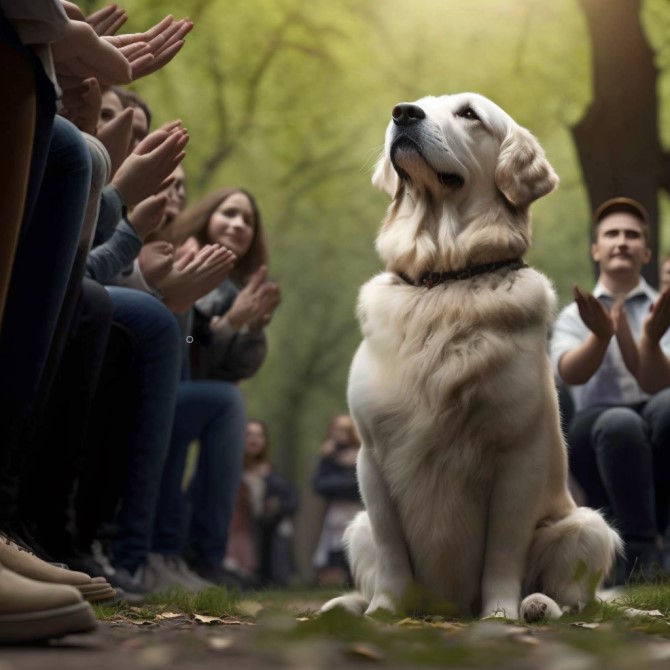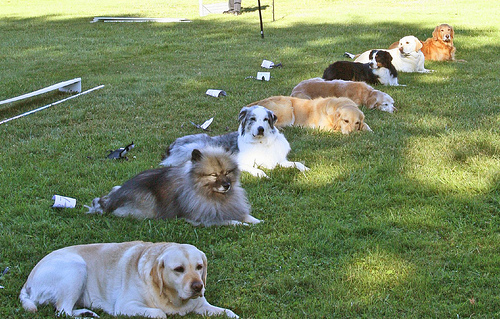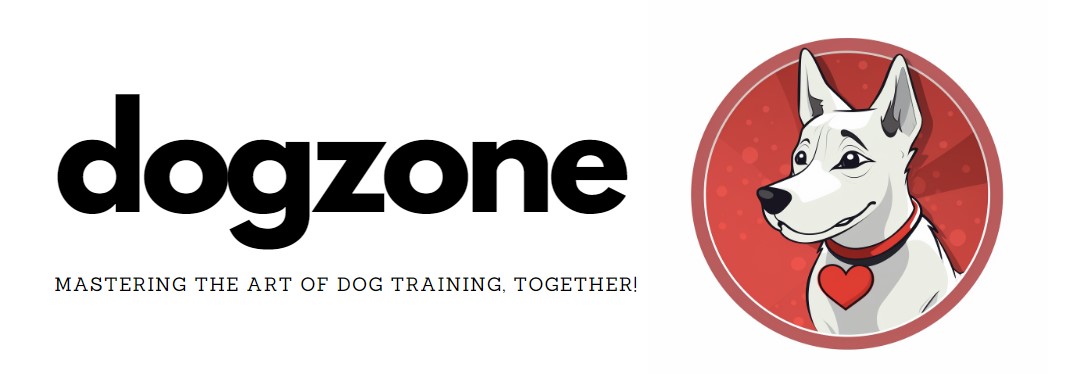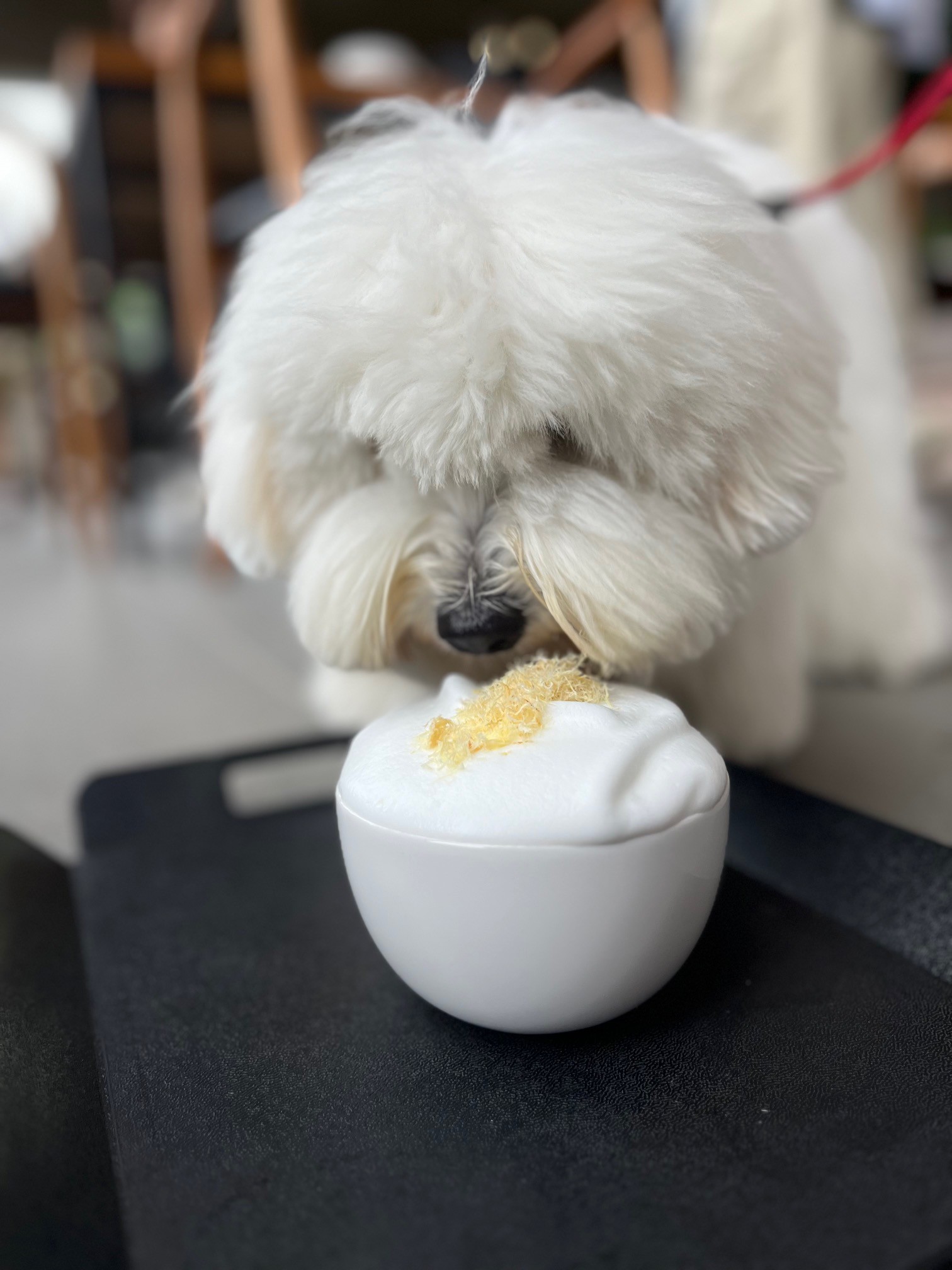You’ve bought a dog but lost the training manual?
Don’t worry!
If you’re new to the whole training a dog thing, then you’ve come to the right place. I’ve trained dogs for many years, and the purpose of this guide is to get you started with what matters the most – obedience!
When it comes to training a dog obedience, these are hands down your best first steps:
How To Teach Your Dog To Greet Guests
Does your dog dance all over you guests as they arrive at your door, leaping and jumping about? While this behavior may only be showing how excited your pup is that company has arrived, it’s impolite and shouldn’t be tolerated. Many people don’t want to be licked nor have their clothes mussed by your enthusiastic pooch. Children and the elderly can be overwhelmed by such greetings. So what is an owner to do?
1. Encourage your dog to sit whenever you enter your house before you greet them. Then when you do, greet them calmly and only when they are seated. This gets them into the habit of keeping all 4 on the floor when people come through the door.
2. Enlist the help of a friend who can remain calm even if your dog attempts his frantic friendly behavior. Have the friend calmly enter your home and stand still by the door. Ask them to give your dog the “sit” command (your dog should already have this command mastered) before they attempt to greet her.
3. If the dog attempts to jump on your helper, have them turn their back towards the dog and even side step away from them. This prevents her from achieving success at unwanted behaviors. When her 4 feet hit the ground, praise and have your friend try again with the “sit” command.
4. When she sits, have your helper calmly praise her with a few seconds of gentle petting. Do not use sudden or rough movements. The goal is keeping your dog as calm as possible. Then move further into the house in a relaxed manner.
5. When success has been achieved with one helper, try and find another willing helper or 2. Work up to a “real” guest! Your dog will realize that she is being rewarded with petting when she is calm and well behaved.
Teaching Your Dog To “Come”
Come is debatably the most important command that you can teach your dog. In a world of distractions having a dog that will reliably respond to a recall command is a joy to have as a companion. It allows both of you to have a bit more freedom and for you to feel confidant that your dog will be safe if your leash breaks, if she slips out the door or if she spots that duck in the pond long before you do!
The Concept: Teach your dog that coming back to you always equals good things!
Step 1: Condition your dog to the “come” command. Each day approach your dog with a tasty treat and say, “come” in a happy voice and give her the treat. This is giving her a positive connection to the word “come”.
Step 2: Once you have given your dog treats and worked on connecting them to the word “come”, then show your dog a treat, say the word “come” and step backwards 3 steps. When your dog follows you, give her the treat and praise!
Step 3: Continue practicing while taking a few more steps backwards as your dog catches on. You can incorporate a “sit” into the “come” command by moving the treat from the level of your dogs nose up to your waist. Most dogs will move into a sit automatically. If not, work on that command separately.
Troubleshooting: Not much can go wrong when you are offering your puppy treats and praise! If she is less than enthusiastic, try another kind of treat or work on training before mealtime.
Make sure you never use the “come” command to get your dog to do something he wouldn’t want to do (go in the crate, take a bath, etc). This should be a purely positive experience and any form of negativity surrounding the training will discourage your pup from returning to you reliably!
Teaching Your Dog To “Sit”

Sit is one of the commands we often ask of our dogs, and thankfully it is one of the easiest to teach correctly! It is a very natural movement for most dogs, thus they catch on to the behavior quickly. However, we sometimes see people using unnecessarily forceful methods to enforce the “sit” behavior. Pushing a dog’s bottom to the ground is not an effective way to teach a sit and can actually cause orthopedic issues.
The concept: Your dog’s bottom follows his head. Use this to your advantage.
Step 1 – Start with your dog in a standing position in front of you. Be prepared with a pocketful of yummy treats.
Step 2 – Hold the treat between your fingers and move it just above your dog’s nose, up, and slightly forward (away from you, towards your dog’s tail).
Step 3 – The path of the treat should be such that if your dog follows his nose he will end up in a sit position before he even knows how he got there. The *instant* this happens give the treats and lavish praise, i.e. “good SIT!”
Remember to train in short sessions (5-10 minutes) at least a couple times a day, and always make it a fun game for your dog! Rewards and tons of praise make training something your dog will look forward to.
Troubleshooting:
If your pup attempts to mouth your hand or is having trouble focusing, this is not a good time for training. Take her out for a good play session and then try again. She shouldn’t be full of energy when you are trying to teach a new command.
If you are holding the treat too high above your dog’s head he may attempt to jump at the treat instead of lowering himself towards the ground. Try lowering your hand.
If your pup is moving backwards for the treat, you may want to try training sessions against a wall or a piece of stationary furniture, so she has no room for backing up.
If he isn’t interested enough in the treats you’re using to follow their lead, try training before a meal, when he’s sure to be hungry. Also consider using very soft, meaty treats, as these will be the most appealing.
Teaching Your Dog The “Down” Command
“Down” is a great interception command. If you see a potentially dangerous situation about to occur, such as the lure of a door accidentally left open, what command can you use to stop your dog from going anywhere? Down! If you simply want your pooch to go settle elsewhere as you are cleaning, carrying heavy items or having a picnic in the park, “down” is the ideal command to instruct your dog on how to behave in these situation.
The concept: Once again, your pup will follow food. You move the bait where you want him to go and his body will go with it.
Step 1: Start from the sit position (your dog should know the “sit” command before attempting the “down”). With a tempting, meaty treat in hand, raise a tidbit in front of your dog’s nose and then, with one smooth movement, lower it towards the floor and pull it back slowly away from him (starting from the tips of his paws and moving towards yourself). He will hopefully follow it, ending up in a down position.
Step 2: Incorporate the word “down” with the action. While you are leading your dog into the down with the treat, use the command “down” so he begins to associate the meaning of the word with the movement of lying down.
Troubleshooting:
If your dog is having trouble following the treat as you move it away from his paws, you may be moving your hand too fast, or he may just not like the treat you are using as bait! Slow your movements down and try a more flavorful treat (we find that tiny pieces of turkey dog work well!)
If you’re getting the opposite response, meaning your pup is standing up, it probably means you’re not lowering the treat to the ground and instead are pulling it out in front of him, causing him to want to move forward.
If you find yourself repeating the command over and over – don’t. Your pup is not hard of hearing! He’s just not understanding what you want to do yet or choosing not to do it. Saying a command too many times may desensitize him to the word, making association with the desired action more difficult. Instead, say the command once and then guide him into the down with the treat. Patience will pay off! Lots of praise and treats when he gets the hang of it, of course!
Teach Your Dog The “Watch Me ” Command
The command “Watch Me” may seem very basic, but it is a stepping stone to all of the other obedience work you will be doing with your dog. This command allows you to get your dogs attention and relay the message that you are wanting him to pay attention to you. Distractible puppies often have a hard time mastering the “watch me” command as they are rambunctious packages of energy who have a difficult time focusing on anything! This simple exercise will take patience. It is the foundation to all of the other training you do in the future.
Goal: To get your dog to pay attention! Eye contact is key!
Step 1: Prepare a high value treat- something soft and smelly usually works best! (We like tiny pieces of turkey dogs!)
Step 2: Move the treat upwards away from your dog towards your body up to your face.
Step 3: When your dog makes eye contact with you – immediately praise and give her the treat. As soon as she understands the connection between the eye contact and the reward you can start adding the command “Watch Me” into the exercise.
Tips: Try and keep the treat bag out of sight or your dog may spend more time focusing on where the treat came from and not where it is going!
Once your dog gets good at this command, start using the treats less as a lure and more as a reward. Do not move the treat and just use the command. When your dog looks in your eyes because she understands what you are asking – praise and treat!
Teach Your Dog The “Stay” Command
Teaching your puppy the stay command means that your dog should learn to remain in the exact position you left her in until she is released. This can be either a “sit” or a “down”. (You can substitute “down” for “sit” if preferred)

The Concepts: Make sure you are the one who controls when the “stay” is over. Your pup must learn self-control. The exercise is over only when you tell her “OK”.
Step 1 – Put your pup into a “sit” and tell him to “stay” while showing her a hand signal you will use for this command (flattened open hand, palm towards her face). Give this signal momentarily in front of his face and then step off to the side next to your dog.
Step 2- Stand still and silent for a few seconds and feed your puppy a treat while still standing next to him. Next, step back in front of your puppy and give your release command (OK!) and encourage movement so he understands that he is now allowed to move. Praise him calmly. Don’t encourage jumping or other rambunctious behaviors.
(These 2 steps should take a total of 5-7 seconds in the beginning phases of teaching your puppy this command)
Step 3- Eventually increase the duration of the time you are standing next to your puppy. Once your pup is in a sit, ask him to “stay. Calmly praise and give a treat. If he continues to remain calm you can continue giving treats every few seconds. She will soon connect being stagnant with the flow of yummy things!
Troubleshooting:
If your puppy breaks the stay before you have time to give him a treat you can tell him “eh, eh” and put the treat away. Start over from step 1. You want your puppy to learn that good things come to those who remain seated.
Make sure to never give a good treat when you release your puppy from a stay (i.e. – when your dog gets up from remaining calm and seated). The treats should only be given to reinforce calm, inactive behavior. Giving a treat upon the completion of a “stay” exercise would reinforce activity which is the exact opposite behavior we are trying to train!
If your dog doesn’t seem to be “getting it” after 3 or 4 attempts, take a break and try some physical activities. Go for a walk and try a training session after he has exerted a bit of energy.
The “Interrupt” Command
Purpose: Teaching your dog this behavior will allow you to redirect his attention back to you when he is doing something inappropriate like barking, bothering the cat, paying an overenthusiastic amount of attention to visitors, etc. When this command is solidly understood, your dog’s response should be so habituated that he won’t care whether or not you have a treat in hand! However, in order to teach the command, many treats will be used.
Step 1: Set up a distraction free environment. You want to do everything you can to set your dog up to succeed in any training exercise you attempt! Choose a command such as “Over Here” or “This Side” as your interrupt cue. Start by saying the phrase in a happy and upbeat tone of voice while you have your dog’s attention. As you are doing this, reward with a piece of a high value treat (a piece of cooked chicken, turkey dog, cheese etc). Keep this up until you see that your dog is grasping the connection between the treat and the verbal phrase.
Step 2: In an environment with few distractions, practice the command. When your dog is doing something that he finds mildly interesting, like sniffing an old pair of sneakers, give the interrupt command in a happy tone of voice. If he has made the connection between the rewards and the phrase, he should stop the action he is doing right away and come running to you for his treat! Make sure you have it prepared.
Step 3: While in a controlled environment, add in more distractions. Better toys and more items to sniff are good “trials” to see if the command is solid. If the response seems to be getting slow or he seems confused by what you are asking of him, move back to the previous step. Eventually you can try this out in the real world! Walking your dog around the block will be a whole different story when you can prevent him from sniffing at that overly interesting fire hydrant or at that pile of marinating trash on the footpath!
Hurry Up!
Teaching your dog to “do his business” on command is one of the most useful word associations you can teach him – especially when it is pouring rain or when there are inches of snow on the ground and you have your slippers on. This process is a very simple one and most dogs will easily pick it up. You can start working on this with your puppy as soon as you come home and even older dogs can learn this readily. “Old dogs can’t learn new tricks” does not apply here!
The concept: Positively reinforce your dog’s association between the command and the act of going to the bathroom.
Step 1: When your dog is starting to urinate or defecate calmly say “hurry up” (or whatever command you’d like to use- however don’t make it too embarrassing, remember – you do have to say it in public!).
Step 2:When your dog is done going to the bathroom, praise him and give him a treat.
Make sure you give the command as he is going, and do not sound overly excited or you might distract him from his “calling” and he’ll stop. Soon your dog will learn to associate the act of going to the bathroom with the command and you will be able to ask him to “hurry up” when you are running late for work and you need him to go right away.
Please remember that this is not something that you can force so if your dog doesn’t go when you give the command it’s not appropriate to scold him in any way.
Drop It!
The “Drop It!” command is another training command that comes in handy on an almost daily basis (especially with young mouth-centric dogs). Once it is learned, it is an invaluable tool that allows you to keep your hands slime free while safely getting your dog to drop that moldy piece of bread or other foul goody.
The concept: When your dog is offered something better than the object he is showing interest in, the higher value treat will prevail.
Step 1: Prepare your training tools – some extremely tasty high value treats (bits of turkey dog, freeze dried liver, cheese, etc) and a fairly uninteresting toy that your dog will put in his mouth.
Step 2: Get your dog interested in the toy, leading him to take it in his mouth, when he does this tell him “Drop It” and offer him the treat. When he drops the toy in exchange for the treat – lavish praise!
Troubleshooting:
If your dog is choosing the toy over the treat, there could be three issues:
- You need to try a different treat – he isn’t a fan of the one you are using.
- He isn’t hungry enough – try this exercise at a different time of day that isn’t close to a mealtime.
- The toy you are using to train with is too much of a prized possession. Choose one he likes a bit less.
The Basics of the “Leave It” Command
This command is a must have in any setting, but especially when you live in the city. There are so many tempting distractions, from diners enjoying a luncheon in the park, to children playing with a tempting ball, to all the pigeons and squirrels that inhabit the city, to who knows what it is that is smashed on the sidewalk (but for some reason looks appetizing to your pooch!). Once your dog masters this command, you will be able to tell her to not chase that pigeon or eat that piece of trash.
The concept: Your dog will learn that not going for an item/object is rewarded!
Step 1: Take a high value treat and hold it in your hand. When your dog attempts to grab the food from you, close your fingers around the treat and ignore all her attempts to get the treat. Do not yell, scold or make any other movements, just stand perfectly still and wait it out. The very second that your dog stops trying to get the food from your hand – open it! Praise! She deserves the reward for settling down and “leaving it”!
Eventually (or quickly) your dog is going to start to understand that stopping the frantic behavior directed at something she wants is what gets her the reward. Lots of praise will help make this a fun activity.
Troubleshooting:
If your dog simply will NOT stop trying to get the food, maybe she is a bit too hungry for this kind of exercise. Do not try this training exercise on an empty stomach – make sure your pup has eaten beforehand, so she isn’t too frantic to get her treat.
Where to go next with training a dog obedience?
Make sure you use the search feature. We have so many expert tips and advice on dog training – after all, it’s my day job!
Here’s a few good starting points:



Leave a Reply